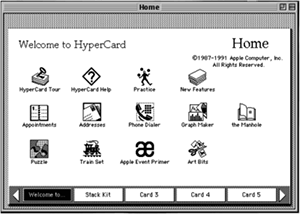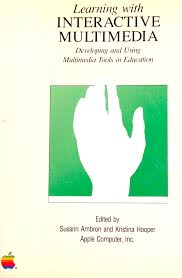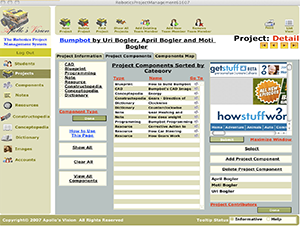As an advocate of project-based learning,my students were always busy working on projects. While observing them work,it always occurred to me,that there was a fundamental flaw in the way they were approaching problems. Instead of engaging in an investigative process of discovery that leads to deep learning,they approached it as a process of searching information for the “one right answer.”An outcome,which is greatly influenced by an industrial age education system,that fails to instill critical thinking and collaboration skills,so essential for the workforce of the 21st century. These days,as our education system starts waking up to the benefits of project-based learning and 21st century skills,we are witnessing many new effective methods that can turn our students into critical thinkers. Yet,a student’s ability to tap into a generic approach that they can always turn to when faced with a problem,is still to be desired. Such a set of guidelines can provide students with the means to simplify and organize information,better understand what they learn,store it more effectively in long term memory,see the big picture and discover relationships within the data. Realizing this,motivated me to start Project Pals.
One of the first things that influenced me to design Project Pals was a simple method for solving math problems,that I learned in elementary school in Israel. To make problem solving an intuitive process,our math teachers introduced us to fourguiding principles that are at the core of analysis–identify the facts,identify the problem,develop the solution,provide evidence. By helping us define the problem in very simple terms,it became one of those tools we could always rely on to solve our math problems. Years later,when using this method to teach my students programming,I started wondering what made it into such an effective tool. Digging in depth into its underlying features,revealed that it imitates the way our brain works. In dealing with complexity,the brain is helped by breaking down a problem into its component parts and preparing a simple “model” that shows how the parts relate to the whole. This methodical approach,which we used for all our math problems,forced us to break down the problem into simple components and arrange them in a logical sequence,helping us see both the details and the big picture. Its great benefit was that it helped us improve our problem solving skills and minimized known problem solving pitfalls,such as,neglecting to identify important parts of the problem or failing to understand the problem that needs to be solved. This became my inspiration for the Components,Events,Relationships and Analysis sections in Project Pals,guiding principles that lead students to break up a project into its component parts,see how those components come together in events,map out its web of relationships and use analysis to identify its inherent problems.

The HyperCard user home page
In my computer teaching years,some of the applications I worked with,have had a great impact on my educational philosophy and teaching style. HyperCard was one such application,because with its set of advanced authoring tools,that include programming,database,and multimedia,it offered students the opportunity to direct their own learning and create sophisticated computer products,that reflect their own interests. Fitting right into my student centered educational philosophy,HyperCard’s real impact on the ideas at the core of Project Pals was established,when I read “Learning with Interactive Multimedia,” a book written by several individuals at Apple Computer research labs about their experiences working with HyperCard. One of the contributors to this book was Fabrice Florin,whose article “Information Landscapes” started me thinking how the world is entering a new era of big data and how important it is that students possess the type of skills that can help them make sense of the data they encounter daily. In this article,Fabrice–who was in charge of developing one of the first videodisc applications of HyperCard in collaboration with HyperCard’s developer Bill Atkinson–describes how HyperCard enables “a new class of information environments,which can be created and delivered with relative ease through interactive presentations of images,sounds,and words.” His powerful ideas about organizing data in “information landscapes,” are laced with the seeds of a futuristic vision of information technology. He describes “information landscapes” as organized arrangements of ideas connecting a set of multimedia materials,created by a community of interested users and authors,collaborating to extend the shared knowledgebase. A description that clearly reminds us of the internet as we know it today.

The Book “Learning with Interactive Multimedia”by Sueann Ambron and Kristina Hooper
Project Pals internal structure was greatly influenced by Fabrice’s forward looking ideas regarding information management. The ability to categorize information along generic yardsticks,such as Action,Time,Place and any custom category that students can think about,follows that line of thought. Each of these categorized information bits can also be attached to different types of supporting media,such as images,sound,video,animation,or any other material types,which according to Fabrice create “Clusters of tightly interconnected materials,” connecting data points to each other along specific lines of thought. The Project Pals Events section tries to provide users with a platform where users can experience moments as if they were witness to them,influenced by that same storytelling practice described in Information Landscapes. Even the Relationships section in Project Pals owes a debt to the value that Fabrice finds in concept maps and the new meanings it can add to the same materials.

The Robotics Project Management Tool
In 2000,while working as a FileMaker developer,I discovered Robotics. I was fascinated with Lego Mindstorms sets and started experimenting with them in my free time. Following pre-made blueprints seemed too simple,so my mind was busy devising a plan by which students can become creators of their own original robotics designs. I wanted my students to be self-reliant or rely on each other’s help. In order to accomplish my goal,I decided to use my database programming ability to create a Robotics Investigation Database,that will guide students through the process of building their own original robots. The database had four sections:Design,Construction,Programming and Investigation. Students,working in teams, would create a record for their project. They used external applications,such as MLCad to create their robot’s design and store the design file in their database as an attachment. Mastering the design of a robot is probably one of the most complicated tasks that students need to do. They had to rely on extensive research and build a knowledge foundation they could rely on. To help them do that,I was inspired by MIT’s constructopedia–an encyclopedia of sorts that included basic building advice stored in a database that students could learn from and build upon when creating their own robots. Any relevant information they gained while researching the subject,they stored in my database in the Investigation section. Storing this information seemed important because students could always go back and revisit their projects and see the guiding principles they relied on in building their robot. The investigation section was also used to record their robot’s testing experiences. They wrote down their problems,frustrations,possible solutions,and success stories. In the Construction section,student would store their construction blueprints,which they generated using an external application. The programming section served as a repository of their various attempts to program their robot. With time,the database became a valuable repository of students’ projects,that they could revisit for reference,to help them with other projects,and to get ideas for new projects.
I created the Robotics Investigation Database because I believe that to solve problems,students need to be able to focus on the detail,as well as the big picture and have it all in one place. The outcome becomes a valuable source of information that students can use in their future endeavors. I learned a lot from following how students used the database and applied some of these lessons to improve the database and add new features to it. However,the biggest lesson I learned was that Robotics projects should not be the only beneficiaries of this work methodology. My brain wandered to the possibility of applying this method to any project that students work on. I reasoned that any project can be broken down into its components,which students can then focus on and discover its details. Those components interact with each other in various events,that students can describe and bring to life. These components are also connected to each other in different types of relationships,that students can lay out in mind maps. The entire analysis helps students better understand and discover the problems,the solutions and the reasons why it can all work.
Throughout the years,these influences have led me to a project-based teaching approach and to develop tools in line with this educational methodology. Project Pals is the outcome of a long process of thinking how to help students become self-reliant independent learners,equipped with thinking and collaboration skills,ready to address the challenges of a new knowledge-based economy.
